Art World
How the Fashion House Valentino Took Inspiration From Jamie Nares’s Paintings for Its Couture Show in Venice
The artist contributed the finale look to the fashion house's couture runway show.
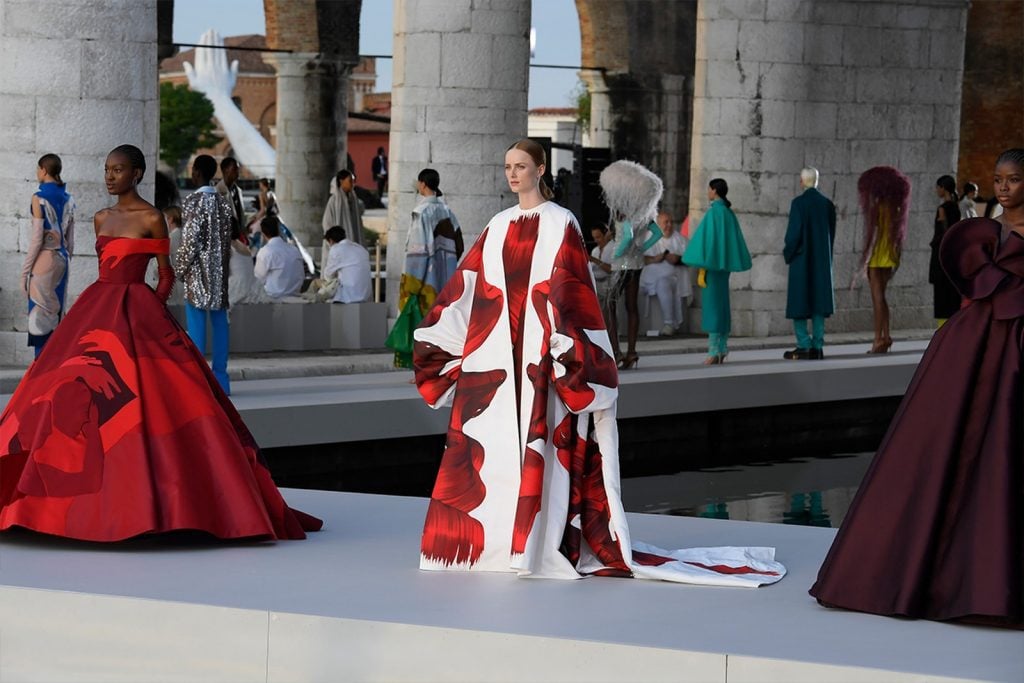
The artist contributed the finale look to the fashion house's couture runway show.

Sarah Cascone

The British-born American artist James “Jamie” Nares has yet to show in the Venice Biennale, but she did just contribute work to a Valentino runway show in the Gaggiandre, the historic 16th-century shipyard at the Arsenale, which is a main venue for the famed contemporary art show.
As the late afternoon sun streamed into the space on Friday, a crowd dressed all in white gathered to witness “Des Ateliers,” Valentino’s latest 84-look couture collection. The models walked down a runway made from floating barges while singer and songwriter Cosima gave a live performance.
“The place was incredible. It was in the old shipyard, the kind of place I like—an industrial wasteland-ish place on the water,” Nares told Artnet News. “I’ve never been to a fashion show that moved so many people.”
“Even Hamish Bowles from Vogue said that tears came to his eyes at the end of the show, and he wasn’t the only one,” she added. “It was strangely moving.”
The presentation concluded with a dramatic look, modeled by Rianne Van Rompaey, that was based on two of Nares’s large-scale brushstroke paintings, which she creates with her own custom-made brushes. The hand-sewn two-piece garment—which took 700 hours to make, according to Vogue—was a dress and a dramatic cape featuring a five-color red screen print on white cady silk.
Nares had no idea that her work would serve as the finale look until the day before the show, and after she arrived in Venice for the occasion.
“It’s a great honor to be given that place,” she said. “And the dress was incredible. The delicacy and intricacy of the stitching and the folds and sculpting of the fabric—it gave me a great respect for the work that they do.”
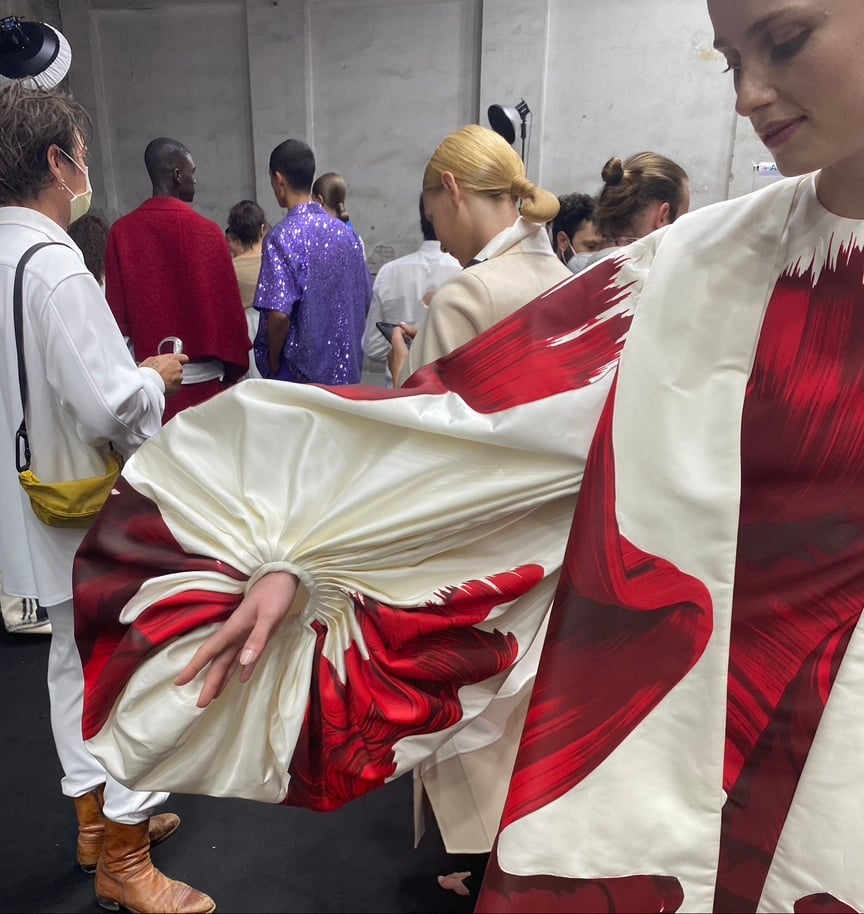
The intricately folded sleeve on the cape for Valentino’s Jamie Nares outfit, modeled by Rianne Van Rompaey. Photo by Elizabeth Blake, courtesy of Jamie Nares.
The artist is one of no fewer than 17 international painters who collaborated with Valentino creative director Pierpaolo Piccioli and curator by Gianluigi Ricuperati on the collection, including Kerstin Brätsch, Andrea Respino, and Wu Rui.
“My challenge was to not create museum T-shirts in a couture way. I wanted to translate these different voices into fashion,” Piccioli told High Snobiety.
Nares got involved thanks to her friend, the writer Luc Sante, who suggested to Ricuperati that her work might be a good fit for the project. The artist, who transitioned publicly in 2019, agreed to lend her work to Valentino on the condition that the house make her a dress.
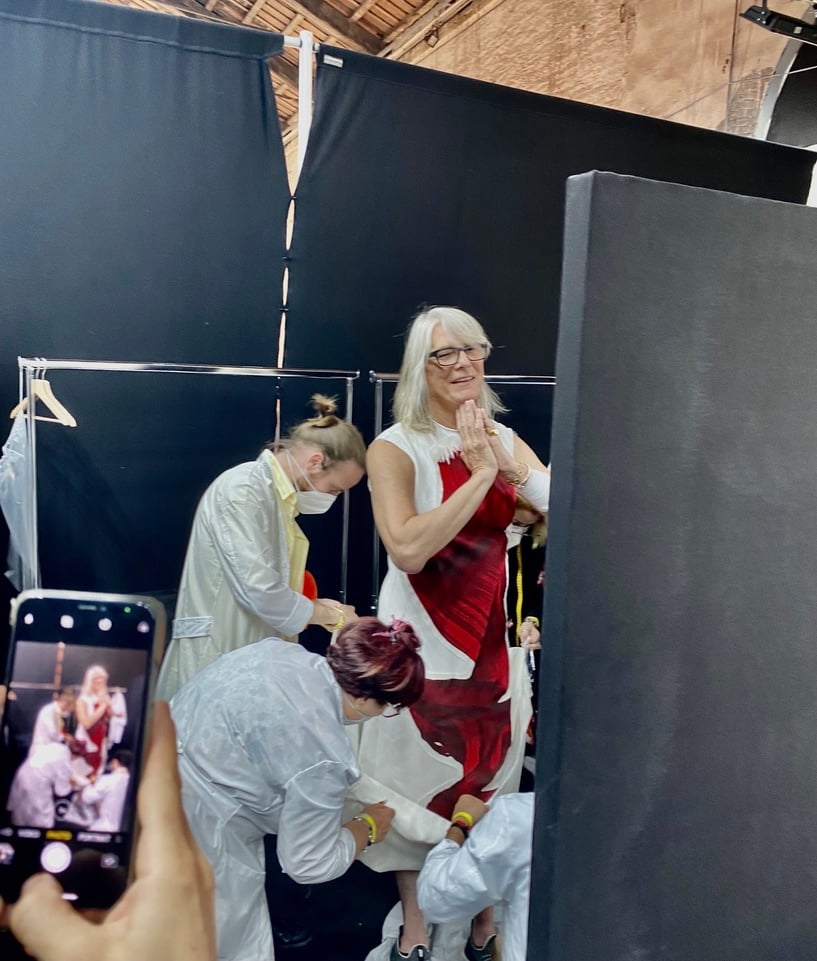
Jamie Nares being fitted for a Valentino dressed based on her paintings. Photo by Elizabeth Blake, courtesy of Jamie Nares.
“It’s very nice to be able to enjoy the kinds of clothes and things that I could never enjoy before,” she said. “I’m still as confused about this as anybody else in some ways—but very clear in other ways.”
“My children tell me I need some help with my fashion sense,” Nares added. “I have three daughters and they are very fashionable young ladies.”
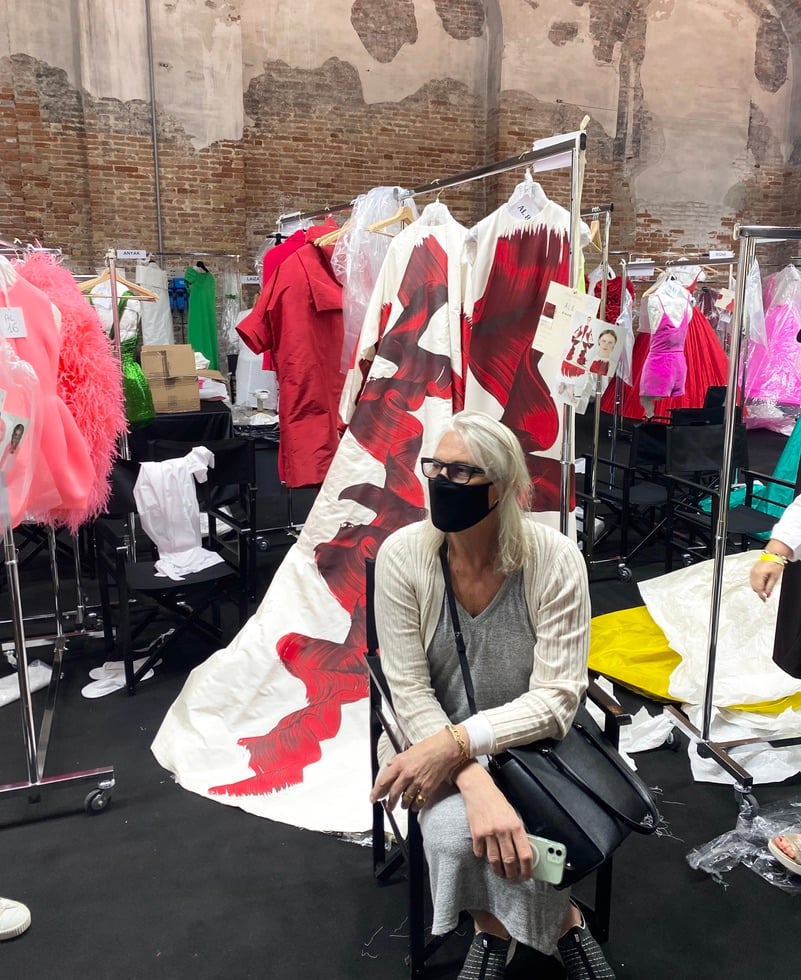
Jamie Nares backstage at the Valentino couture show in Venice with the outfit based on her paintings. Photo by Elizabeth Blake, courtesy of Jamie Nares.
After an initial meeting with Piccioli and his team, Nares selected six potential paintings for Valentino’s use. The house ended up combining elements of her Blues in Red (2004) and It’s Raining in Naples (2003), changing the latter painting from blue to red to create a cohesive design, while keeping in close communication with the artist throughout the process.
“I told them they could do what they wanted. It seemed that the nature of a collaboration presupposes there is going to be some kind of rearranging of the elements,” Nares said. “They took one of the images and reversed it so they could make the cape symmetrical on both sides.”
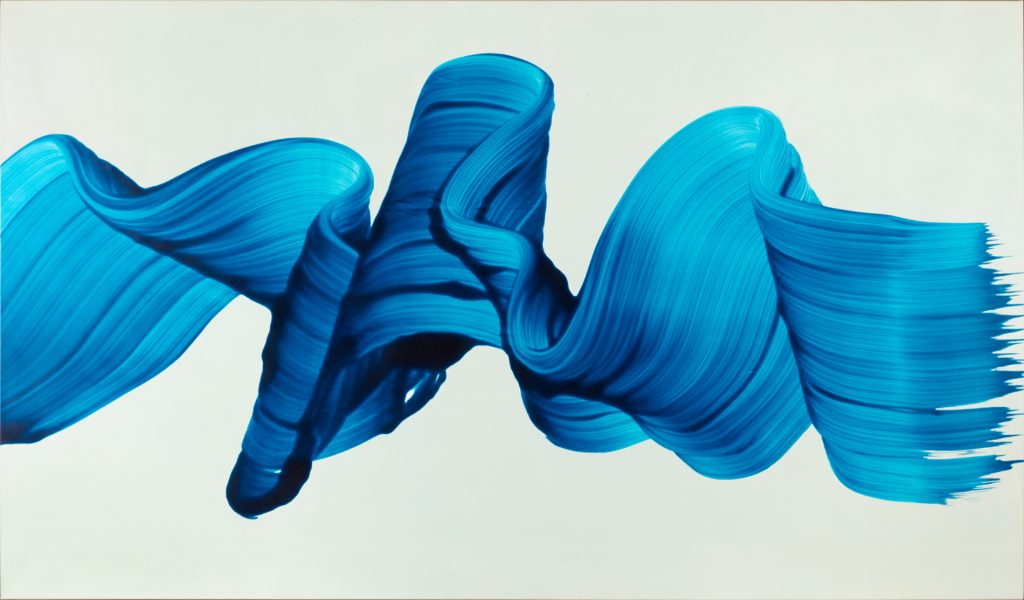
Jamie Nares, It’s Raining in Naples (2003). Courtesy of Kasmin Gallery.
The artist, now 68, used to make her paintings suspended from the ceiling by ropes, but as she’s gotten older she’s developed a less physically demanding practice, working at a large table.
Nares primes each canvas and adds a base coat of oil paint before applying a varnish that allows her to work by trial and error, quickly wiping away the paint until she gets each mark exactly right. (The unused paint is routed into a drain and collects in a bucket for future use.)

Jamie Nares, Blues in Red (2004). Courtesy of Kasmin Gallery.
“It’s like wiping glass,” Nares explained, “I have this system of painting when I can work on a particular brushstroke again and again. My assistant erases it with a couple of sweeps of a squeegee.”
In the end, each painting preserves just a single brushstroke.
“The brushstrokes make a fragment of time visible. It freezes a moment of time like a clip of film,” Nares said. “There’s a very organic feel to my brushstrokes.”
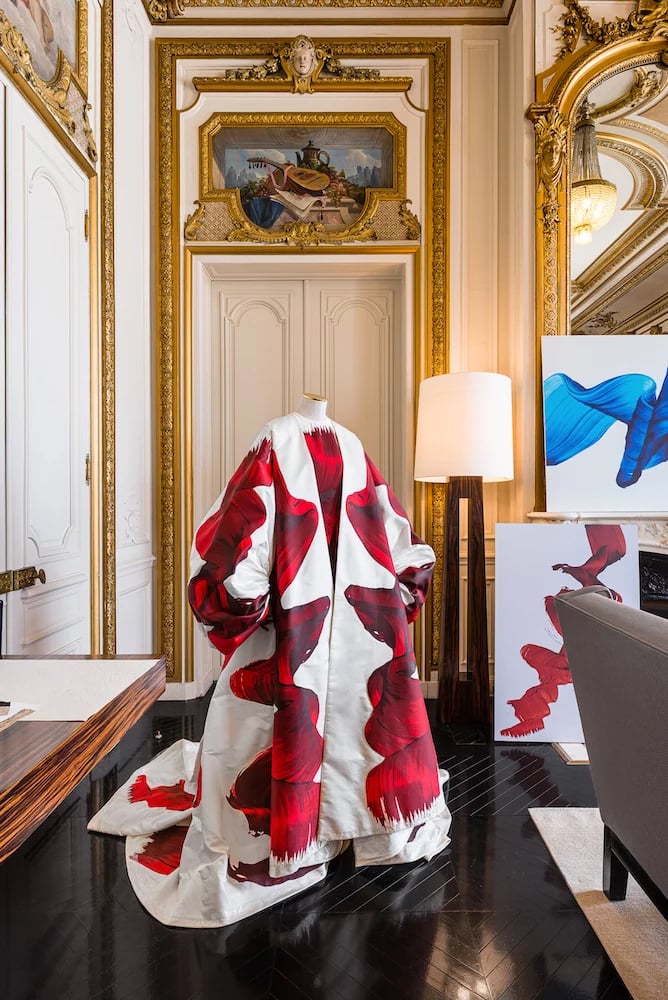
Valentino’s Jamie Nares dress and cape, and the paintings that inspired it. Photo by Gregory Copitet, courtesy of Valentino Des Ateliers.
The result appears fluid and deceptively effortless, almost as if capturing flowing water or a fluttering ribbon.
“There’s a feeling of being moved by an unseen force, like an interior wind that I guess is the spirit,” Nares said. “It’s like a wind that emanates from somewhere deep inside, fully charged with memories, and hopes, and desires, and intentions, and surprises.”
“It was very interesting to see the brushstrokes on actual fabric that was moving,” she added. “It kind of animated them in a way that was a nice surprise.”
See more photos from the show below.
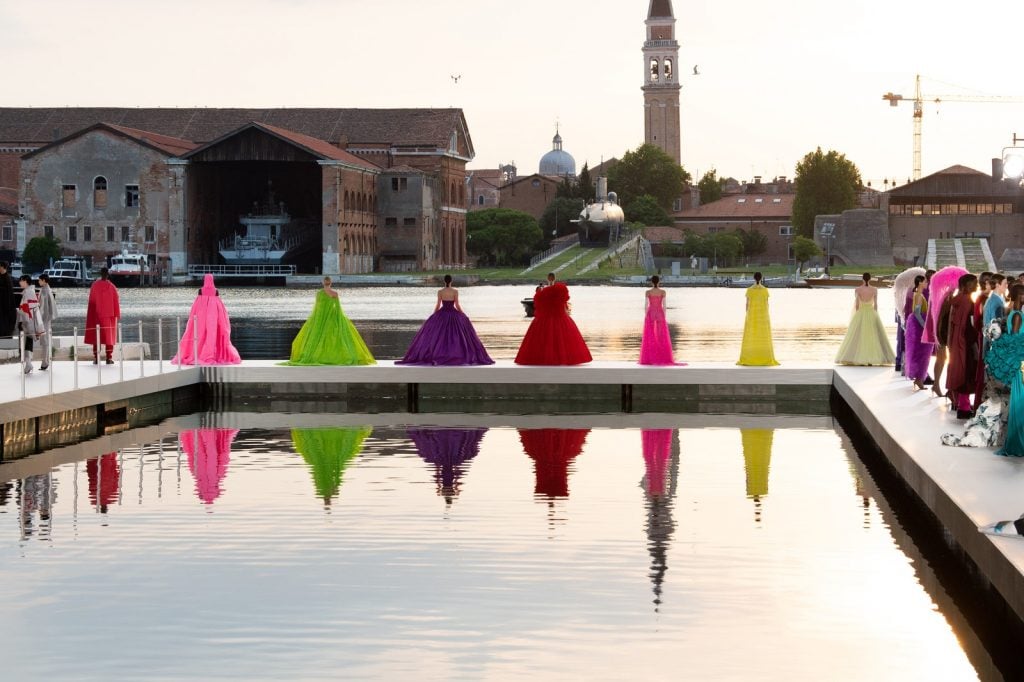
Valentino’s couture runway show for “Des Ateliers” at the Arsenale in Venice. Photo by Pietro D’Aprano, courtesy of Valentino.
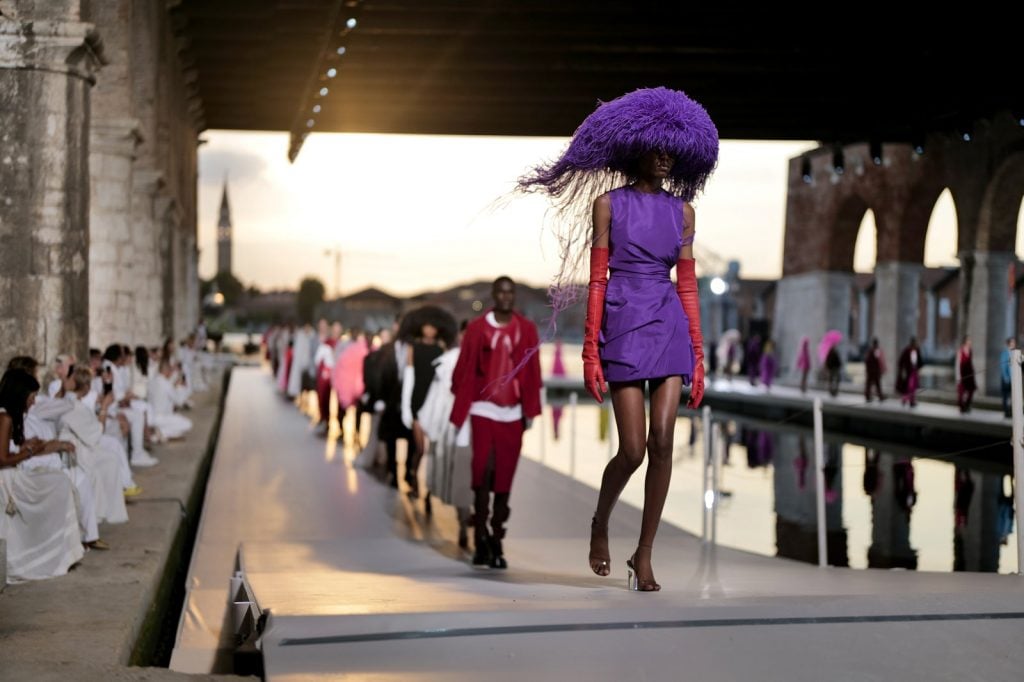
Valentino’s couture runway show for “Des Ateliers” at the Arsenale in Venice. Photo courtesy of Valentino.
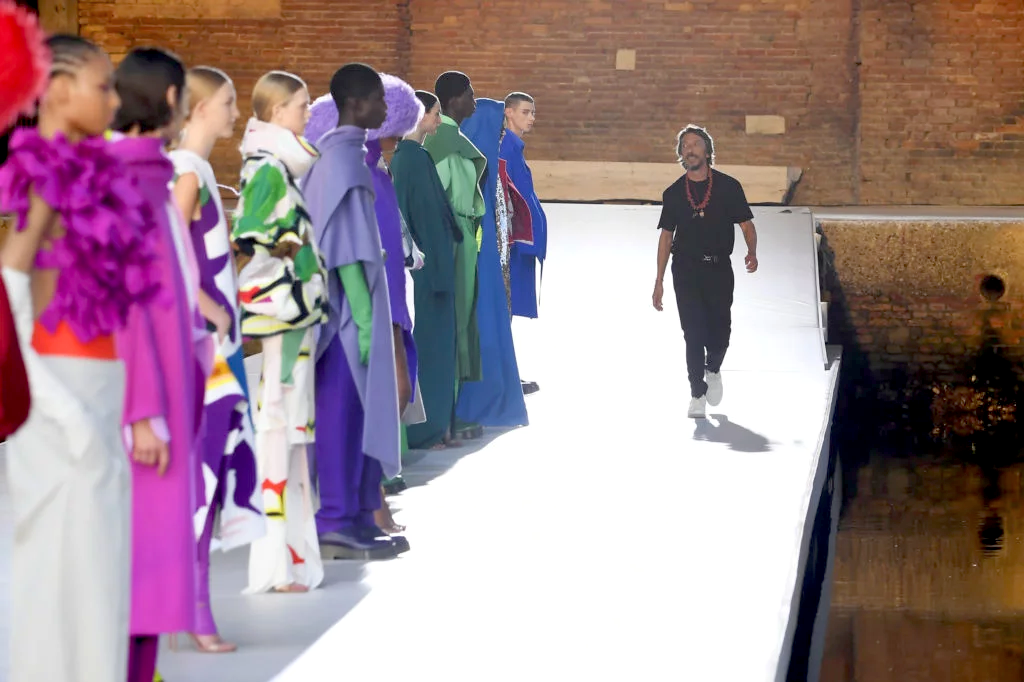
Valentino creative director Pierpaolo Piccioli with his couture runway show for “Des Ateliers” at the Arsenale in Venice. Photo courtesy of Valentino.
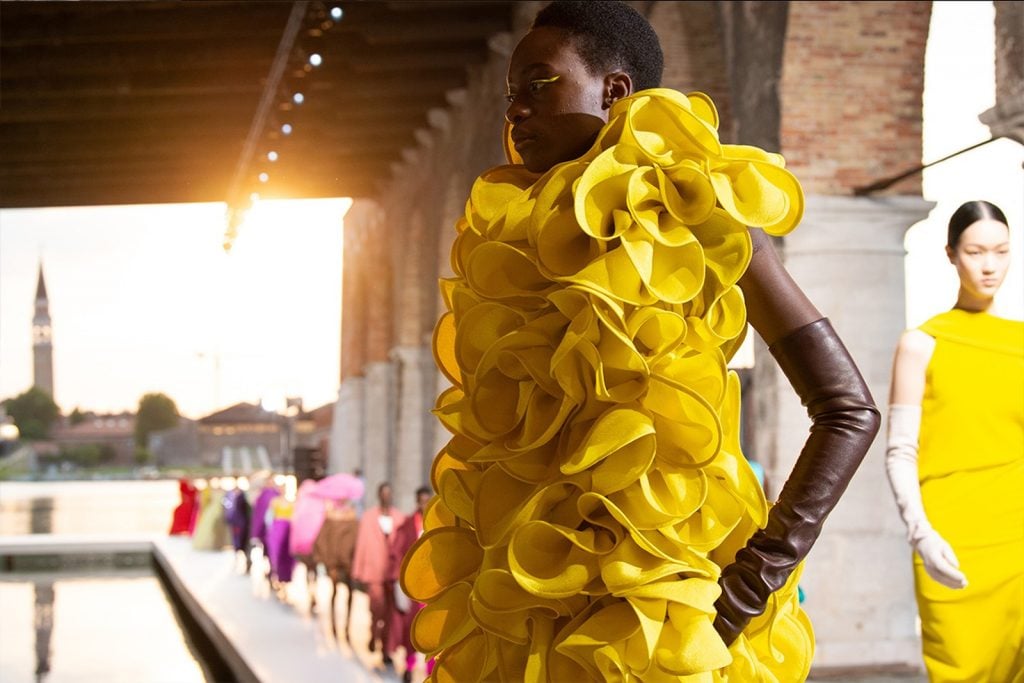
Valentino’s couture runway show for “Des Ateliers” at the Arsenale in Venice. Photo courtesy of Valentino.
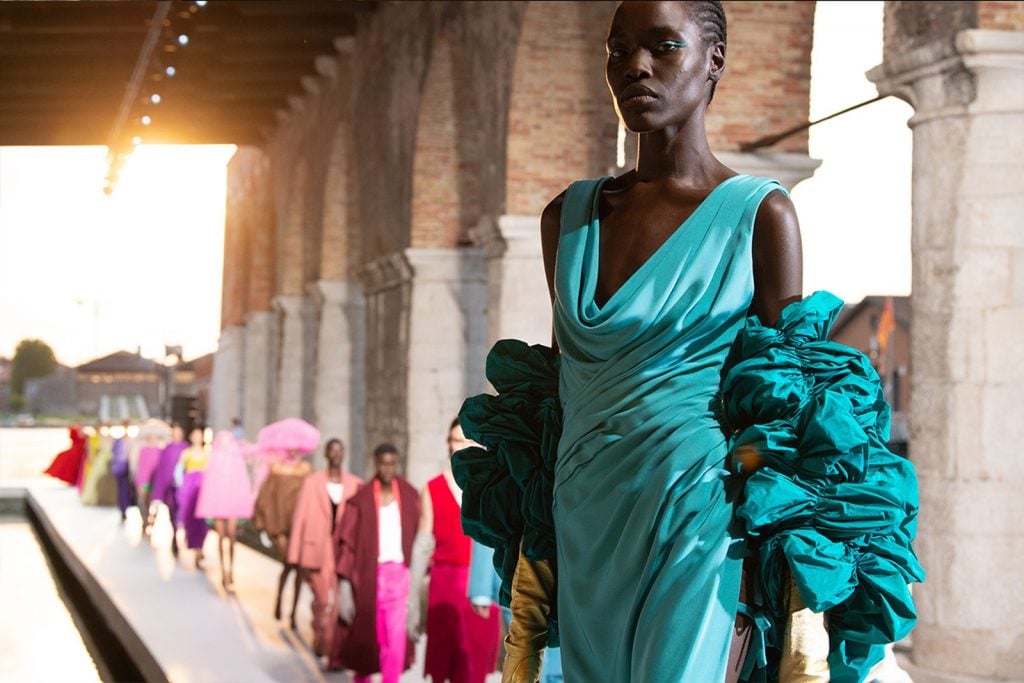
Valentino’s couture runway show for “Des Ateliers” at the Arsenale in Venice. Photo courtesy of Valentino.
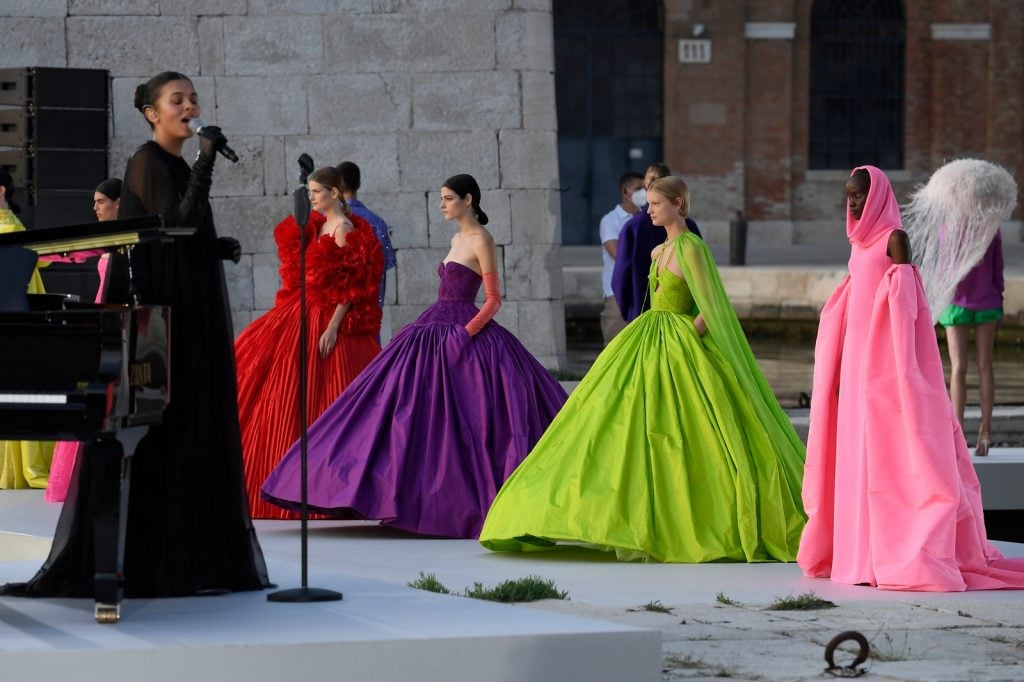
Cosima performs at Valentino’s couture runway show for “Des Ateliers” at the Arsenale in Venice. Photo by Giovanni Giannoni, courtesy of Valentino.